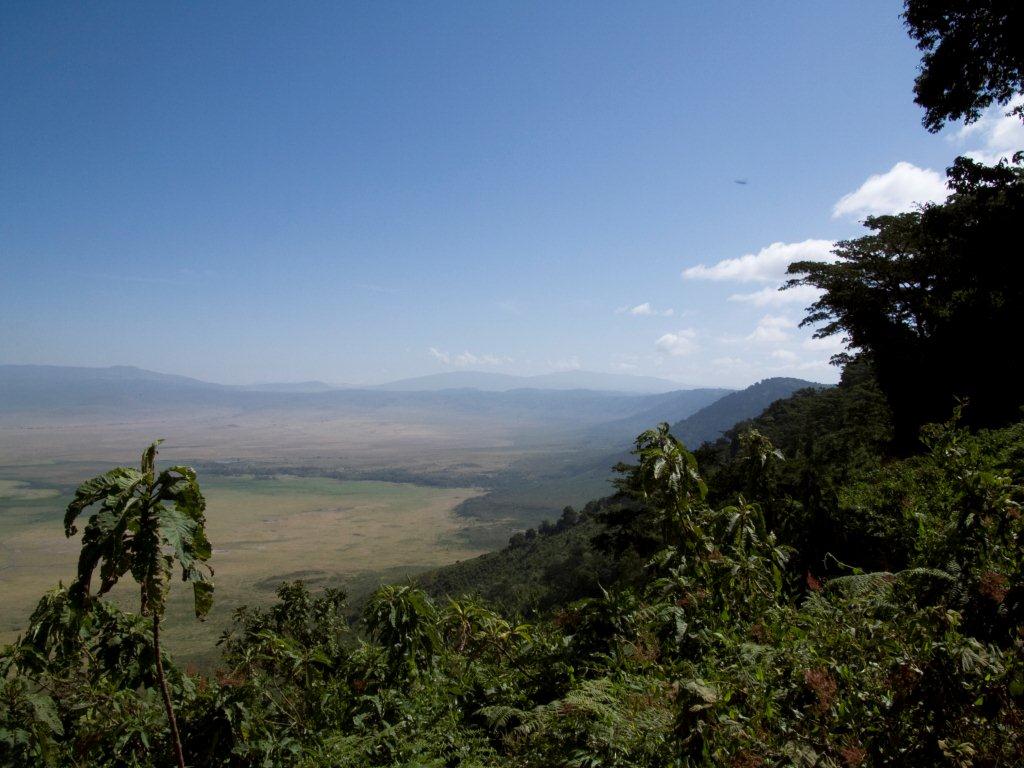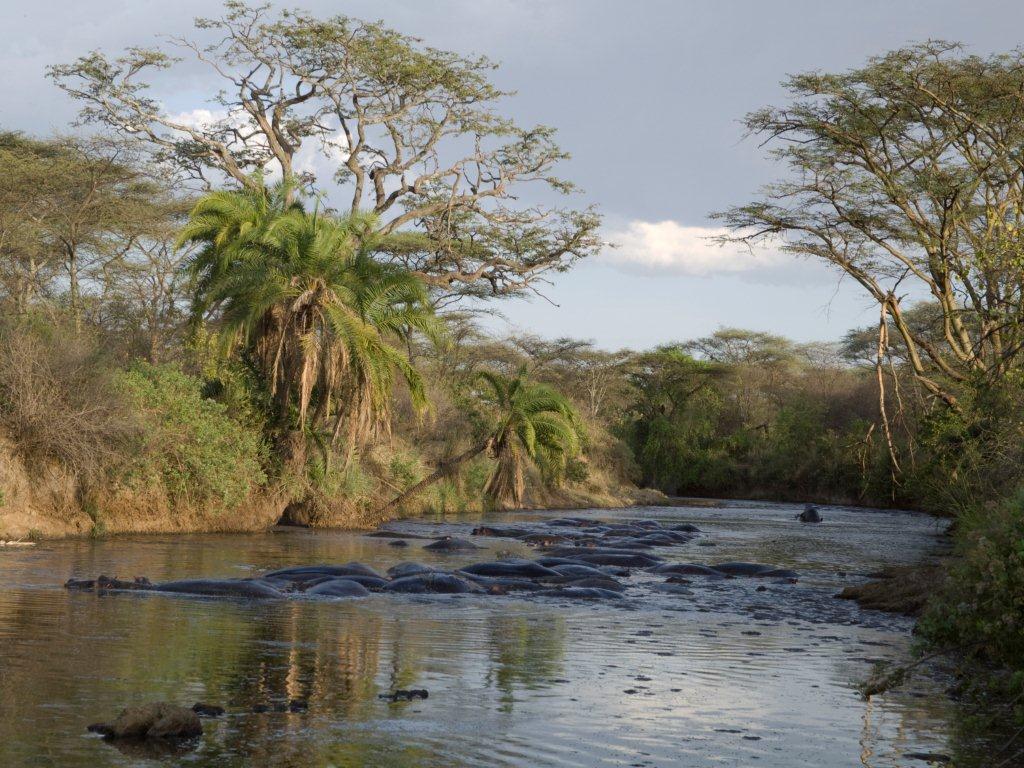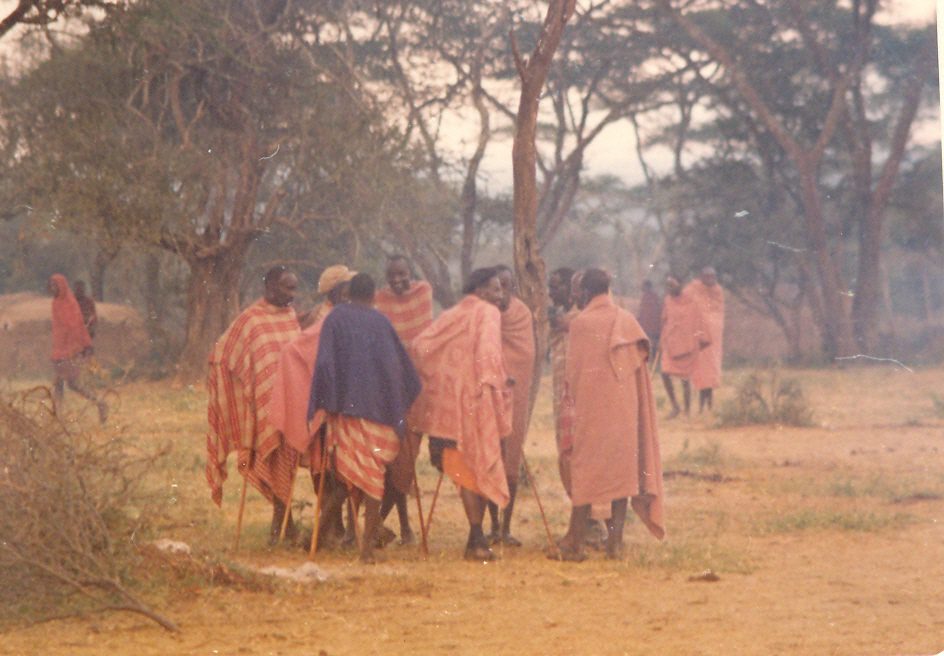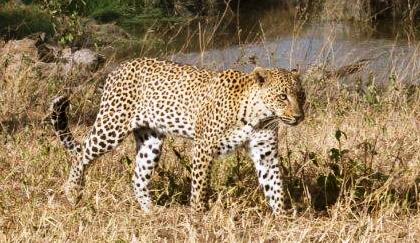Koert Lindijer has been a correspondent in Africa for the Dutch newspaper NRC since 1983. He is the author of four books on African affairs.

It’s called a Wonder of the World. Around the lush green-clad mountain ranges of the Rift Valley and the sea of plains in the Serengeti Game Park, and at the bottom of the immense Ngorongoro crater, the nomadic Maasai of Northern Tanzania shared the Garden of Eden with zebras, lions and wildebeest. But white conservationists, Arab hunters and a growing population undermined the symbiosis. A crisis arose that exploded in June 2022 when riots broke out leaving one person dead, people were displaced and dozens of Maasai shelters went up in flames.
The Maasai have to leave two areas: in the game park Loliondi they have to make way for hunters, in Ngorongoro for tourists. “The government is selling us to the Arabs,” complains Paul ole Sarbabi (a pseudonym) in Arusha, northern Tanzania. He is Maasai and has just returned from Loliondo, which borders the Serengeti wildlife park. This morning he awoke with an elephant at his kraal, his home with a fenced yard. “Wild animals feel safe with us, but the Arabs come to shoot them,” he sneers. “The government has started to demarcate our grazing areas for the Arabs, who want to expand their hunting grounds. We oppose it and the government acts cruelly against us. All Maasai are now scared; if we see a government car, we run. Our area is under a kind of martial law.”
According to Tanzanian President Samia Suluhu Hassan, nature in the Ngorongoro is in danger if the crater is not depopulated now. “We agreed at the time that Ngorongoro is a special area where people and animals coexist. But now it appears that the number of people exceeds that of animals,” she says. In 1959 eight thousand Maasai lived there, now about one hundred thousand. The government wants to reduce that to around twenty thousand. That means only Maasai traditional kraals are left for cultural tourism.

Ngorongoro, Loliondo, Serengeti in Northern Tanzania and the adjacent Maasai Mara in Kenya form a unique ecosystem in the world. But the question arises again and again whether people actually belong there. In and around the Ngorongoro, the government wants the majority of the Maasai – officially on a voluntary basis – to leave the area and settle further south in government-set up settlement villages.
Wild animals and humans do not fit together, is the claim of many animal protectors, mostly from Europe. One of the founders of the protected areas in the Ngorongoro and Serengeti game park was the German professor Bernard Grzimek. He wrote 70 years ago: “For a national park to retain its essential character, it must remain pristine wilderness. No one, not even the natives, is allowed to live in it.” True to that idea, the colonial government threw the Maasai out of the 14,763 square kilometer Serengeti in the late 1950s. They would pose a threat to the animals and were only allowed to live in and around the Ngorongoro Crater, an 8,300 square kilometer reserve. Scientists all over the world have now come to the conclusion that involving the local population is essential for nature conservation.
Grim atmosphere
“What is happening is yet another land theft of the Maasai, the war against the Maasai has been going on since colonial times,” says Tanzanian opposition leader Tindu Lissu from his place of exile in Belgium. The warlike people dominated East Africa until the end of the nineteenth century. In the competition between man and beast, however, wild animals still had the upper hand. Since then, the Maasai in Tanzania have lost 60 percent of their territory to wildlife parks. Yet they still dominate the steppes of northern Tanzania and southern Kenya with their red and blue shawls. But youngsters no longer amble after the cattle, they ride on mopeds. Their savannas are now dotted with schools, churches and mosques. Factories appear in Maasailand on the Kenyan side of the border, old customs such as female circumcision disappear, agriculture is introduced, and many Maasai are now part of an outspoken elite of lawyers and politicians, the pride of their community. The stereotypical image of the nomadic people is no longer valid.
The higher areas around Ngorongoro and Loliondo are not affected by the drought that has caused massive livestock deaths elsewhere in East Africa for years. It is still wonderfully green. Around this time each year, over a million wildebeest and zebras from the Serengeti come to graze and calve before beginning their annual migration north.
A grim atmosphere has developed in Tanzania around the debate about nature reserves. Maasai only want to give information in back places in Arusha, and they don’t dare to take a stranger to their kraals. “The government has a colonial nature conservation policy,” grumbles Maasai activist and lawyer Joseph Ole Shangay from Ngorongoro. “She says she wants to protect paradise, but it is not about nature, it is about money. Tanzania has so many wild animals precisely because there are also nomads. We do not threaten wildlife, we are natural conservationists.”
In colonial times, Loliondo was reserved for European aristocrats as a hunting ground. Books in the 1950s in which the hunter writers Ernest Hemingway and Robert Ruark portrayed the inhabitants as savages and poachers and called them scoundrels, became famous in the white world. President Roosevelt went on a hunting safari there at the beginning of the last century and Winston Churchill fired from the locomotive of the train from Mombasa to Nairobi.
Kenya banned big game hunting in 1978, but the Tanzanian government believes hunting is the best use of the land and wildlife. The cost of a hunting license can easily run into the tens of thousands of dollars; a hunter brings in many times more than one of the one million tourists who visit the country every year and leave their mark in the parks with their off-road vehicles, where large hotels have been built for them.

Landing strip
Since 1993 Ole Sarabi of Loliondo has opposed the arrival of the Otterlo Business Corporation, a tourist company in the United Arab Emirates, to which the government has allocated the 1,500 square kilometer Pololeti Game Reserve for exclusive use. Members of the royal family and hundreds of other wealthy Arab guests hunt there every year. “The Arabs don’t want to see cows and Maasai. They built a luxury lodge in the mountains and a runway where an Airbus can land. When the king hunts there, he takes his own army and police with him. In 2007 they first started burning our kraals to force us to leave the area for the hunters.”
Loliondo became the focus of the crisis in June. The Maasai again resisted evictions and demarcations, security forces used tear gas and shots were fired. “When we refused to leave, the police started shooting at us,” Ole Sarbabi says. A police officer was killed, several injured and a few hundred Maasai fled across the border into Kenya. “This incident has traumatized the entire community; young people are now ready to take up arms.”

No stone houses
The Maasai went to court in Arusha for the first time in 2017 to stop hunting in their area. The state owns all land in Tanzania, “but the government cannot just give away land from the Maasai to the Arabs. The government wants to take their village land, which is against the law,” said Donald Diya, a lawyer for the Pan-African Union of Lawyers (PALU) which is assisting with the lawsuits.
Diya thinks the current nature policy is outdated and calls it ‘fortress conservation’. “It is one of the least populated areas of Tanzania, where the Maasai coexist peacefully with the wild animals. To protect the Garden of Eden you have to work with the people, but the government strategy is to clear the area of people.”

Since its first post-independence president, the socialist Julius Nyerere, Tanzania has always been governed on a strong nationalist basis, averse to tribalism. The country does not subscribe to the special rights recognized by the UN for so-called ‘indigenous peoples’. Nyerere adopted Grzimek’s old policy: around the Ngorongoro crater, the Maasai had to remain “primitive”, they were not allowed to farm and build stone houses with story’s. “You are being stopped at the gate when you try to enter the reserve with a door or toilet for your house,” says a Maasai. “And also we would like to ride a moped sometimes.”
A senior official in the area calls it “a sensitive matter” and therefore does not want his name in the newspaper. He defends the displacement of the Maasai who still live around the crater. “They are better off in the new villages that the government is now establishing for them in southern Tanzania,” he says. According to him, the soil is suffering from the increased pressure from people and livestock. “People who say otherwise refuse to change.”
According to the Maasai, there are no indications that the area is being eaten bare by their cattle due to the increased population. According to them, the wildlife population is not declining either. The Maasai do not hunt. They graft their way of life onto nature and have an intimate knowledge of it. They understand the sounds of birds and animals and part of the year their cows graze next to the zebras. “It’s racism,” says Ole Shangay. “There is no better way to explain the madness of this colonial form of conservation – that we have to leave our homeland so that others, whether white tourists, royalty or wealthy urbanites, can use our pasturelands as their playground.”
This article was first published in the Netherlands newspaper NRC on 12-12-2022

